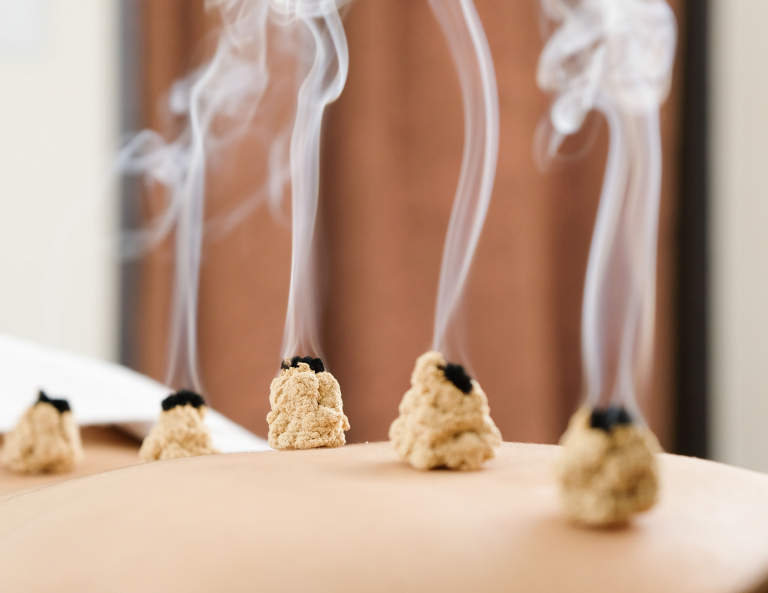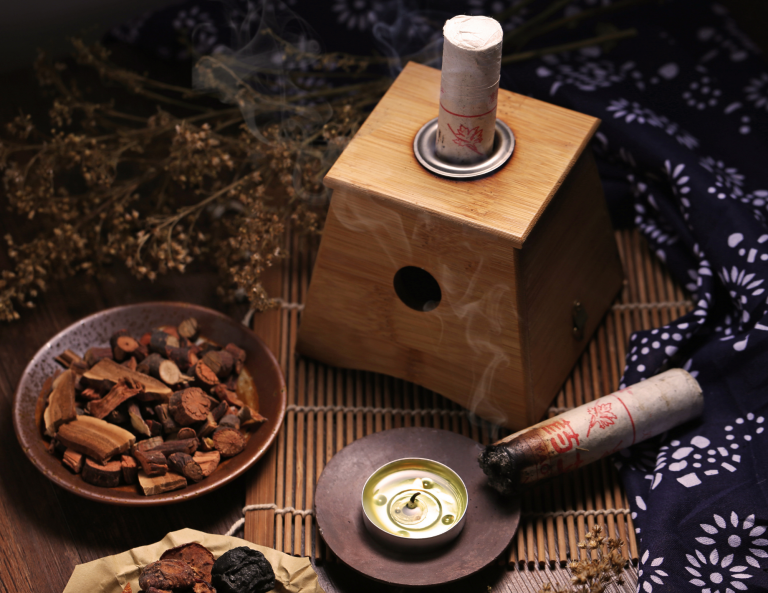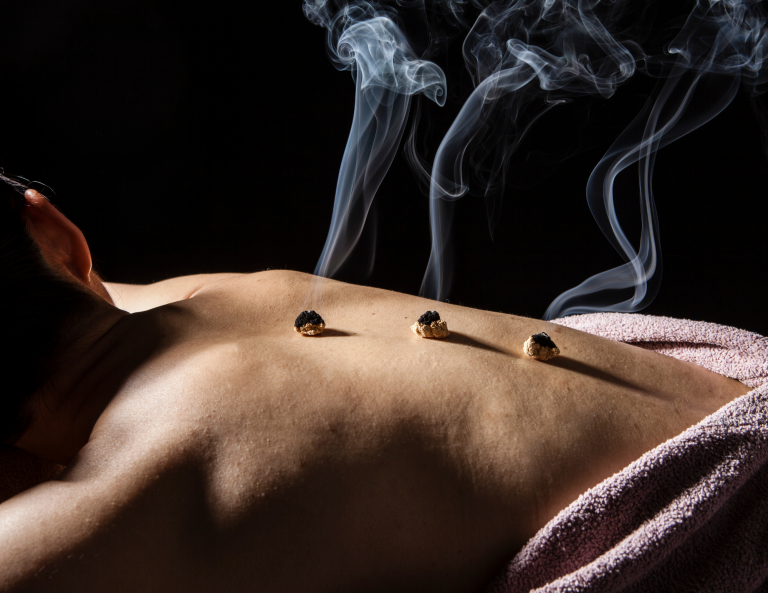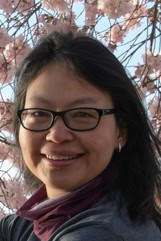Home › Moxibustion in Acupuncture: History, Uses, Benefits, Cautions
Moxibustion in Acupuncture: History, Uses, Benefits, Cautions
Moxibustion is a part of integrative medicine and is often used in addition to acupuncture, cupping, Tai Chi, etc. It is a form of heat therapy that involves burning the dried plant moxa and leaving it either on or very near the skin surface. This helps promote the flow of Qi and dispel certain pathogens in the body.

What is Moxa?
Moxa is traditionally made from the dried leafy plant mugwort that usually has a pleasant aroma. It can be made into sticks of various sizes or mixed with other herbs to enhance the benefits. Sometimes, practitioners will choose to apply loose moxa with a burner as well.
Moxa has been used in traditional ancient Chinese medicine for thousands of years. While its benefits still require a lot more research, moxa has been shown to help fight serious diseases and maladies, from cancer to joint pain.
How is Moxibustion Applied?
Moxibustion can be applied either directly or indirectly.
In direct moxibustion, the moxa cone rests on the patient’s body at the treatment point. The practitioner lights the cone and lets it burn slowly until the skin begins to turn red. Once the patient starts feeling the heat, the practitioner will then remove it.
In the United States, most practitioners will choose the indirect way of applying moxibustion since it is typically safer. Instead of leaving the moxa cone on the skin, the practitioner will hold the burning moxa stick about an inch or two above the skin over specific areas, often but not always corresponding to certain acupuncture points. They will remove it once the patient’s skin becomes red and warm.
There are other methods of applying moxibustion indirectly, one of which is placing moxa on the acupuncture needle and leaving it to burn until it’s extinguished, letting the heat travel through the needle to the acupuncture point. Additionally, practitioners can also use an insulating layer of salt or garlic between the cone and the skin, or place a “moxa box” on the body, so the moxa does not touch the skin directly.

Why Use Moxibustion?
Moxibustion invigorates blood and promotes flow of Qi. It is often used for the flowing conditions:
- Pain (shoulder pain, abdominal pain, knee pain, joint pain, etc,) due to accumulation of cold and dampness in the body that causes pain. Moxa heat can expel cold and dry dampness, which helps relieve pain.
- Chronic diarrhea caused by deficiency. This is because moxa warms up the meridian and strengthens the digestive system, which helps improve diarrhea condition.
- Organ prolapse (bladder, uterus, etc.) due to Qi deficiency since moxa promotes Qi and raises prolapsed organs.
- Overall wellness in health. Moxa tonifies Yuan Qi (prenatal Qi) and strengthens the immune system, which reduces risk of illnesses and extends life.
Perhaps, the most well-known benefit of moxibustion is helping to turn breech presentation, which happens when a baby is positioned feet-first in the birth canal that makes the birthing process much more difficult. Moxibustion is an alternative way to help turn the baby into a normal head-down position by applying it indirectly at certain acupuncture points. For safety and effectiveness, this should only be done professionally by licensed practitioners and acupuncturists.
Something to keep mind, in a 2018 review of studies on moxibustion for breech presentation, the author noted that while there is some evidence indicating its effectiveness, the practice still lacks high-quality research in overall to make a definite conclusion.

How Does It Feel?
Many patients have reported feeling a sudden flooding of warmth that quickly radiates throughout the body, usually corresponding with the jing luo channel that is being treated, when moxibustion is applied. For most patients, that is a very relaxing feeling because it is promoting a strong flow of Qi around the body.
Can I Do It Myself?
Moxibustion is also a type of medical practice in traditional Chinese medicine, and like every other medical practice, it is best to seek out a highly-skilled licensed practitioner. Since it is often done alongside acupuncture, some licensed acupuncturists can also perform moxibustion if needed.
Learning Acupuncture and Moxibustion at VUIM
The practice of moxibustion is usually taught as part of a qualified acupuncture or traditional Chinese medicine program. In the United States, a practitioner must be licensed in order to perform moxibustion.
If you’re interested in learning more about moxibustion, or acupuncture as a whole, the Virginia University of Integrative Medicine (VUIM) provides professional training in Acupuncture and Integrative Medicine. The VUIM’s Acupuncture Clinic provides acupuncture treatments, including moxibustion, with the goal of promoting balance and health.
VUIM is Virginia’s first and only accredited institution that offers graduate degrees in Acupuncture and Integrative Medicine. Through the programs, you will have the chance to obtain hands-on working experience as a clinical intern, along with learning key business skills and professionalism that prepare you for a successful, rewarding, long-lasting career as a licensed acupuncturist.
Learn more about VUIM’s Acupuncture program requirements or apply to jumpstart your career as a licensed acupuncturist today!
About the Author

Tong started the Master of Science program in Acupuncture at VUIM in October 2017 while holding a full time job in a financial service firm. She completed all required courses and clinical internship work in Spring 2021, and is currently studying for the VUIM graduation exam and NCCAOM board exam. Tong enjoys nature and practices Tai Chi regularly.
